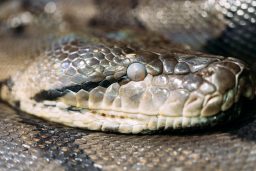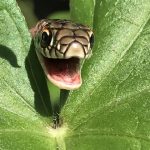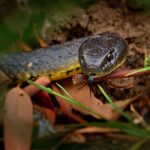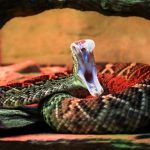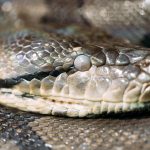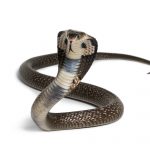Characteristics of Deadly African Snakes
Deadly African snakes possess a range of characteristics that make them formidable predators. One such characteristic is their venomous bite, which contains potent toxins that can cause severe damage to their prey or potential threats. These snakes have evolved complex venom delivery systems, allowing them to inject their venom with precision and efficiency.
Another characteristic of deadly African snakes is their ability to camouflage themselves within their surroundings. Many species have developed patterns and colors on their scales that blend seamlessly with the environment, making them difficult to spot even for experienced observers. This enables these snakes to ambush unsuspecting prey or hide from potential predators.
Furthermore, deadly African snakes are known for their agility and speed. They can strike swiftly and accurately when attacking or defending themselves, often catching their victims off guard. Some species, such as the Black Mamba, are renowned for being one of the fastest land-dwelling serpents in the world, capable of reaching speeds up to 12 miles per hour (20 kilometers per hour).
These characteristics highlight the adaptability and effectiveness of deadly African snakes as hunters and survivors in diverse ecosystems across Africa. Understanding these traits is crucial for both researchers studying snake behavior and individuals living in areas where encounters with these reptiles are possible. By recognizing these characteristics, people can better appreciate the importance of respecting snake habitats while taking necessary precautions to ensure personal safety in snake-infested regions
The Importance of Venomous Snakes in Africa’s Ecosystem
Venomous snakes play a crucial role in Africa’s ecosystem, contributing to the delicate balance of nature. These snakes are not just deadly predators, but also important contributors to the overall health and biodiversity of their habitats.
One key aspect of their importance lies in controlling rodent populations. Many venomous snakes feed on rodents, which can be destructive pests that damage crops and spread diseases. By keeping these populations in check, venomous snakes help maintain a healthy ecosystem for both wildlife and humans.
Furthermore, venomous snake species often serve as indicators of environmental health. Their presence or absence can provide valuable insights into the state of an ecosystem. For example, if certain snake species decline or disappear from an area, it could indicate habitat degradation or pollution issues that need attention.
In addition to their ecological significance, venomous snakes have also played a significant cultural role throughout African history. They feature prominently in folklore, art, and traditional medicine practices. The respect and fear associated with these creatures have contributed to conservation efforts aimed at protecting them and their habitats.
The Importance of Venomous Snakes in Africa’s Ecosystem
Snake Envenomation: Understanding the Dangers
Snake envenomation is a serious and potentially life-threatening condition that occurs when venom from a snake bite enters the bloodstream. The venom of African snakes can vary in composition, but it typically contains a mixture of toxins that target various body systems. These toxins can cause severe pain, tissue damage, organ failure, and even death if not treated promptly.
One of the primary dangers of snake envenomation is the rapid onset of symptoms. Depending on the snake species and the amount of venom injected, symptoms can appear within minutes to hours after a bite. Common signs include swelling and discoloration around the bite site, intense pain, nausea or vomiting, dizziness or fainting, difficulty breathing, and bleeding disorders such as uncontrolled bleeding or clotting abnormalities.
Another significant danger lies in the potential complications that may arise from untreated or delayed treatment. Snakebite victims are at risk for developing infections at the site of the bite due to bacteria present in snakes’ mouths. Additionally, without proper medical intervention such as antivenom administration and supportive care measures like fluid replacement therapy and wound management, systemic effects like kidney failure or cardiovascular collapse can occur.
It is crucial for individuals living in or visiting areas with high snake populations to be aware of these dangers and take appropriate precautions. This includes wearing protective clothing when venturing into snake-infested areas, avoiding tall grasses where snakes may hide, using caution when reaching into dark crevices or under rocks where snakes could be hiding, and seeking immediate medical attention if bitten by a snake. Understanding these dangers can help save lives by promoting prompt recognition and treatment of snake envenomation cases.
African Puff Adder: A Formidable Venomous Snake
The African Puff Adder, also known as Bitis arietans, is one of the most dangerous snakes in Africa. It is responsible for numerous snakebite incidents and fatalities across the continent. With its distinctively broad triangular head and characteristic zigzag pattern on its back, this venomous snake can easily blend into its surroundings, making it difficult to spot even for experienced individuals.
What makes the African Puff Adder particularly formidable is its potent venom. The venom of this species contains a combination of cytotoxins and hemotoxins, which can cause severe tissue damage and disrupt blood clotting. Its bite can lead to excruciating pain, swelling, blistering, necrosis, and even death if left untreated. Due to their ambush hunting style and excellent camouflage abilities, these snakes often catch their prey by surprise with lightning-fast strikes.
Encountering an African Puff Adder in the wild should be taken extremely seriously. They are responsible for more human fatalities than any other snake in Africa due to their wide distribution across various habitats such as grasslands, savannas, forests,and even urban areas. Their defensive behavior includes hissing loudly while coiling up into an S-shape before striking when threatened or cornered. It is crucial to exercise caution when exploring snake-infested areas to avoid potential encounters with this deadly serpent.
Boomslang: The Stealthy Assassin of the Trees
The Boomslang, scientifically known as Dispholidus typus, is a venomous snake found predominantly in sub-Saharan Africa. This slender and agile reptile is highly adapted to its arboreal lifestyle, making it an expert climber and jumper. With its long body and prehensile tail, the Boomslang can effortlessly move through trees with stealth and precision.
One of the most distinctive features of the Boomslang is its striking coloration. While males are typically green or yellow-green in appearance, females can vary from shades of brown to olive green. This cryptic coloring allows them to blend seamlessly into their surroundings while hunting for prey or avoiding predators.
Despite being relatively shy and non-aggressive towards humans, the Boomslang possesses potent venom that should not be underestimated. Its venom contains hemotoxins which affect blood clotting and can lead to internal bleeding if left untreated. Bites from this snake should be considered a medical emergency requiring immediate attention.
With its ability to camouflage perfectly among foliage combined with deadly venom, the Boomslang truly lives up to its name as a stealthy assassin of the trees. Understanding these characteristics is crucial for both researchers studying African ecosystems and individuals living in areas where encounters with snakes like the Boomslang are possible. By raising awareness about these fascinating yet dangerous creatures, we can better appreciate their role in nature while also taking necessary precautions for our own safety.
Black Mamba: Africa’s Most Feared and Fastest Snake
The Black Mamba, known as Africa’s most feared and fastest snake, is a reptile that strikes terror in the hearts of many. With its sleek black body and incredible speed, this venomous serpent is truly a force to be reckoned with. Found throughout sub-Saharan Africa, the Black Mamba can reach lengths of up to 14 feet and can slither at speeds of up to 12 miles per hour.
One of the defining characteristics of the Black Mamba is its potent venom. This deadly neurotoxin attacks the nervous system, causing paralysis and eventually leading to respiratory failure if left untreated. The venom of a single bite contains enough toxins to kill multiple adult humans within just a few hours. Due to its highly aggressive nature when threatened or cornered, it’s crucial for individuals in snake-infested areas to exercise extreme caution around these creatures.
Despite its fearsome reputation, it’s important not to demonize the Black Mamba entirely. Like all snakes, they play an essential role in maintaining ecological balance in their habitats by controlling rodent populations. Additionally, efforts have been made by researchers and conservationists alike to educate local communities on how best to coexist with these snakes without resorting to unnecessary harm or extermination measures.
Gaboon Viper: A Master of Camouflage and Potent Venom
The Gaboon Viper, scientifically known as Bitis gabonica, is a highly skilled master of camouflage and possesses one of the most potent venoms among African snakes. With its intricate color patterns and ability to blend seamlessly into its surroundings, this snake is often difficult to detect even when it is right in front of you. Its large size and triangular-shaped head make it an intimidating sight for any potential predators or unsuspecting prey.
One of the most fascinating aspects of the Gaboon Viper’s camouflage is its ability to change colors depending on its environment. This incredible adaptation allows the snake to perfectly match the surrounding vegetation, making it virtually invisible to both predators and prey. The Gaboon Viper’s scales are covered with irregular shapes that resemble fallen leaves or dappled sunlight, providing excellent concealment in forested areas where it resides.
Apart from its exceptional camouflage skills, the Gaboon Viper possesses venom that ranks among the most potent found in Africa. When threatened or provoked, this viper strikes with lightning speed, delivering a powerful bite that injects a venom capable of causing severe tissue damage and disrupting blood clotting mechanisms. Its fangs are long and hollow, allowing for efficient delivery of venom deep into its victim’s tissues. Due to these factors combined with their often docile nature unless disturbed, encounters with humans can be particularly dangerous if caution is not exercised.
With such remarkable abilities in both disguise and venom potency, the Gaboon Viper has established itself as one of Africa’s most formidable snakes. It serves as a reminder that appearances can be deceiving in nature’s realm while highlighting the importance of respecting wildlife from afar rather than engaging them closely without proper knowledge or expertise.\n
Cape Cobra: A Deadly Snake with a Unique Defense Mechanism
The Cape Cobra, scientifically known as Naja nivea, is a highly venomous snake found primarily in southern Africa. It is renowned for its unique defense mechanism, which sets it apart from other deadly snakes in the region. Unlike many other species that rely on camouflage or aggression to ward off threats, the Cape Cobra has a rather unusual way of defending itself.
One of the most distinctive features of the Cape Cobra’s defense strategy is its ability to “hood” and produce an intimidating display when threatened. By spreading out its long neck ribs and flattening its head into a hood-like shape, this snake can appear much larger and more menacing than it actually is. This display serves as both a warning signal to potential predators and a means of protecting vital parts of its body from attack.
Another remarkable aspect of the Cape Cobra’s defense mechanism lies in its venom delivery system. Like other cobras, this species possesses hollow fangs through which it injects potent neurotoxic venom into its prey or adversaries. However, what makes the Cape Cobra particularly unique is that it can deliver multiple bites during an attack without releasing all of its venom at once. This allows it to conserve precious venom reserves for future encounters while still inflicting significant harm on those who threaten it.
In addition to these physical defenses, the Cape Cobra also relies on stealth and agility to avoid danger whenever possible. It prefers not to confront potential threats directly but instead seeks escape routes or hides under cover when faced with perceived danger. Its quick reflexes and ability to move rapidly make encountering this deadly snake even more challenging for those who venture into their territory unprepared.
Egyptian Cobra: A Serpent of Myth and Lethal Venom
The Egyptian Cobra, also known as the Asp, is a snake that has long been associated with mythology and legends. It holds a significant place in ancient Egyptian culture, often depicted in hieroglyphics and artifacts. This venomous serpent is not only intriguing from a historical perspective but also poses a serious threat due to its potent venom.
Measuring an average of 5-7 feet in length, the Egyptian Cobra possesses distinctive characteristics that set it apart from other snakes. Its slender body is covered in smooth scales ranging in color from light brown to dark black. One of its most recognizable features is the iconic hood displayed when threatened or agitated. This display serves as both a warning sign and an intimidation tactic towards potential predators or threats.
When it comes to venom, the Egyptian Cobra’s bite can be deadly if left untreated. Its neurotoxic venom attacks the nervous system, causing paralysis and respiratory failure if not treated promptly. The potency of its venom makes this snake one of Africa’s most dangerous reptiles. Despite its lethal capabilities, conservation efforts are essential for maintaining balance within ecosystems where these snakes play important roles as predators controlling rodent populations.
Understanding the characteristics and dangers posed by the Egyptian Cobra allows individuals to take necessary precautions when encountering this species in their natural habitat. Awareness about their habitats and behavior patterns can help minimize encounters while exploring snake-infested areas such as grasslands or desert regions where they commonly reside. By respecting their space and seeking professional assistance if bitten, humans can coexist safely with these serpents without jeopardizing their own well-being or contributing to negative impacts on these fascinating creatures’ populations.
Are There Any Venomous Snakes in Canada Similar to Those in Africa?
Are there any venomous snakes in canada similar to those in Africa? While Canada is not home to the same venomous snakes as Africa, it does have a few species of venomous snakes, such as the Massasauga rattlesnake and the Western rattlesnake. However, their venom is not as potent as the snakes found in Africa. Therefore, while caution should always be exercised, the threat from venomous snakes in Canada is relatively low.
Dangers and Precautions: How to Stay Safe in Snake-Infested Areas
When venturing into snake-infested areas, it is crucial to take certain precautions to ensure your safety. Firstly, always be aware of your surroundings and stay alert. Snakes can often blend in with their environment, so pay attention to the ground and any nearby vegetation. Avoid walking through tall grass or dense underbrush where snakes may be hiding.
Secondly, wear appropriate clothing and footwear. Long pants and boots that cover the ankles provide an extra layer of protection against potential snake bites. Additionally, consider using snake gaiters or leggings for added security when exploring high-risk areas.
Lastly, educate yourself about the types of snakes that are common in the region you are visiting. Learn how to identify venomous species and familiarize yourself with their behaviors and habitats. This knowledge will allow you to make informed decisions on how to avoid encounters with dangerous snakes.
By following these precautions, you can significantly reduce the risk of snake bites while enjoying nature in snake-infested areas. Remember that prevention is key when it comes to staying safe from these potentially deadly creatures.
What are some characteristics of deadly African snakes?
Deadly African snakes are known for their potent venom, quick strikes, and camouflage abilities. They can be highly dangerous if encountered in snake-infested areas.
Why are venomous snakes important in Africa’s ecosystem?
Venomous snakes play a crucial role in controlling rodent populations, which helps maintain the balance of the ecosystem. They also serve as a food source for various predators.
What dangers are associated with snake envenomation?
Snake envenomation can lead to symptoms such as tissue damage, bleeding, organ failure, and even death if left untreated. It is important to seek immediate medical attention in case of a snakebite.
Can you tell me about the African Puff Adder?
The African Puff Adder is a venomous snake known for its camouflage and formidable bite. It is responsible for numerous snakebite incidents in Africa.
What is the Boomslang snake?
The Boomslang is a highly venomous snake found in trees. It is known for its stealthy nature and deadly venom, which can cause severe hemorrhaging.
Why is the Black Mamba considered Africa’s most feared snake?
The Black Mamba is known for its incredible speed and highly potent neurotoxic venom. Its bite can be lethal without immediate medical intervention.
What makes the Gaboon Viper unique?
The Gaboon Viper is a master of camouflage and possesses the longest fangs of any venomous snake. Its potent venom can cause severe tissue damage and is considered dangerous.
Can you explain the defense mechanism of the Cape Cobra?
The Cape Cobra is a deadly snake that can spit its venom accurately up to several feet away. This unique defense mechanism helps it protect itself from potential threats.
Tell me about the Egyptian Cobra.
The Egyptian Cobra is a venomous snake that has been associated with ancient Egyptian mythology. It possesses lethal venom and can be found in various parts of Africa.
How can I stay safe in snake-infested areas?
To stay safe in snake-infested areas, it is important to wear protective clothing, avoid walking through tall grass or dense vegetation, watch where you step, and seek local knowledge or guidance when in doubt. It is also advisable to carry a snakebite kit and know the emergency procedures in case of a snakebite.

